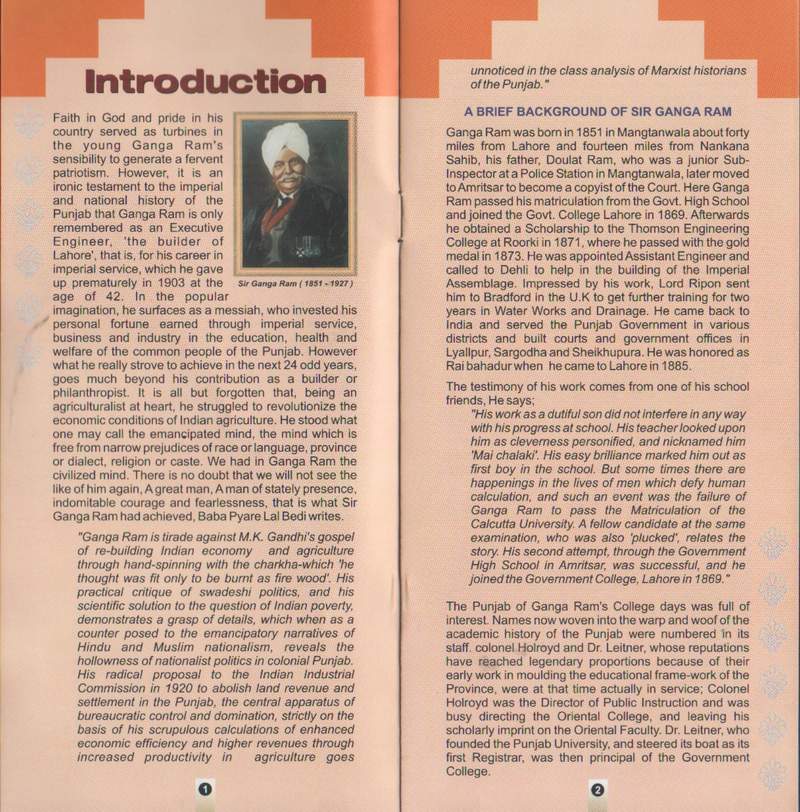LIFE SKETCH OF SIR GANGA RAM

Sir Ganga Ram was a genius who had a rare combination of vision and hard work that could sense the completeness of things and a mind free of narrow prejudices of race, language, religion or caste. He was born on 14th April 1851 in Mangatanwala, district Sheikhupura, Pakistan. He graduated from Government College, Lahore and completed his education of Civil Engineering with Gold medal from Thompson Engineering College, Roorki, India. He worked as an Assistant Engineer in Delhi, and then went to UK for training in water works and drainage. He worked in the rural areas like Sargodha, Lyallpur (now Faisalabad) and Sheikhupura on water works and drainage system. In Lahore, his works as a Civil Engineer are tremendous. He designed many beautiful buildings and also worked for the sewerage and drainage system in Punjab. He renovated the Darbar Hall into a magnificent building in the Patiala State, also worked on the drainage system and constructed many buildings in the Patiala state, e.g. high school, central jail, law court, police station etc. The greatest achievement of Sir Ganga Ram was the Gangapur Agricultural Project in Pakistan which made Gangapur an agricultural village with modern and highly equipped machinery, including steam and electric power devices. He also constructed a hydro power station for the development of irrigation at Renala Khurd on Lower Bari Doab canal, Punjab, Pakistan. Sir Ganga Ram wrote The Pocket Book of Engineering which was a guide for on-site engineers, contractors and sub-divisional officers. It contains troubleshooting techniques and solutions to the problems on site. He was also selected as a senior member of the Royal Agricultural Commission in late 1920s. The chairman of the commission was Lord Linlithgow who later became the Viceroy of India in 1936. The work done by Sir Ganga Ram for this agricultural commission was remarkable. In those times the practice of ‘sati’ or burning wives alive along with the dead bodies of their husbands was very common. Widowhood was a terrible social evil in the Indian society. Sir Ganga Ram was the first person to raise the living conditions of widows by bringing the issue of remarriage of Hindu widows into light. This issue was never before seriously considered by the Indian society. For this purpose, he made a Widow Remarriage Association. He also built a big mansion named Fountain House for those widows and destitutes who, for any reason, could not get married again. He also worked for the education of women and built Lady McLagan School and college in Lahore. He was also the first person to work for the underprivileged senior citizens and constructed an old age home for them. He also made a free dispensary for the poor people which later turned into a hospital named Sir Ganga Ram Hospital, Lahore. He had many more plans to serve his state and society but his health did not allow him to turn his dreams into reality and he died in his London home on 10th July 1927.





